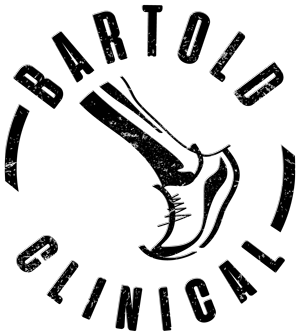
I have been reading and conducting research for more than 30 years now, and in that time I have never seen a published paper pitting one profession against another.
Until now.
The British Journal of Sports Medicine just published a paper entitled “Custom insoles versus sham and GP-led usual care in patients with plantar heel pain: results of the STAP-study – a randomised controlled trial“
The conclusion to the study is one of the most extraordinary I have ever read, and is as follows:
Referral to a podiatrist for a custom-made insole does not lead to a better outcome compared to sham insoles or compared to GP-led usual care.
Now many of you know that I am a podiatrist, and I like to think that I am pretty analytical and critical in my thinking, especially in relation to research. I am more than open to criticism of treatment methods that do not stand up to scientific scrutiny. However, I fail to see how calling out an entire profession, by name, and comparing treatment of a particular condition with another profession.. by name, is the slightest bit helpful, or fits in with what I would expect from a peer review process.
There are some major holes in this study which I believe in no way can justify the conclusion of the authors. Subsequent to the publication of this paper, an editorial was published in BJSM, offering a counter opinion, and underlining some of the issues. This editorial is headed by distinguished research podiatrist Professor Hylton Menz.
If you do not have the time to read either paper, let me summarise….
The authors of the paper in question (including the very accomplished Michael Rathleff) report the findings of the Soles as Treatment Against Pain in feet (STAP) randomised trial comparing the effectiveness of usual general practitioner (GP) care to referral to a podiatrist for custom insoles or sham insoles in 185 people with plantar heel pain. After 12 weeks, the usual GP care group reported less pain during activity compared with the custom insole group (assessed using an 11-point Numerical Rating Scale), although this difference was small (less than one point) and did not meet the minimal clinically important difference for this outcome measure. Secondary outcomes favoured the GP group but were mostly small in magnitude.
The authors concluded that referral to a podiatrist for custom insoles does not lead to better outcomes compared with usual GP care, and as such, healthcare providers should be ‘reserved’ in prescribing custom insoles for the treatment of plantar heel pain.
OK, well methodologically there are no major red flags in this study, and as an RCT it should be a high level of evidence. These types of studies provide valuable sounding boards for discussion and further research. However, as Menz and co-workers point out in their editorial all may not be as it seems, and certainly the conclusion of the study is not without issue.
First, the authors acknowledge that GPs provided more interventions than is typical for the management of this condition in Dutch primary care. In particular, there was a higher rate of ‘heel cups or other biomechanical interventions’ (41%) and corticosteroid injections (15%), and participants randomised to the GP group also attended more consultations. The study concluded that treatment with a custom orthosis provides no additional benefit in the management of heel pain, where in fact it probably should determine that:
Outcomes were similar between the groups, despite the GPs using a wider range of effective treatment options and seeing participants more frequently.
Next, 50 different Dutch podiatrists were included in this study, and given free reign in terms of the prescription, manufacture and dispensing of the custom orthoses. Menz and co-worker rightly make the observation that:
It would appear that no prescription algorithm was used to guide the customisation process.
It is the old story… if I conducted a study using 50 different doctors to prescribe antibiotics for an infection, I would likely get vastly different results in terms of not only the antibiotic of choice, but, the dosage! This approach is highly problematic. Put simply, (and disregarding the ongoing debate about how. when or if we should prescribe an orthosis), in the context of this study we simply have no yardstick of the protocols for the assessment, prescription or manufacturing process.
One thing that fairly leaps off the page is the fact that all the orthoses were fabricated from EVA, and that the the Shore A of the custom insoles ranged from 30 to 60—a massive variation and:
“An equivalent hardness range from a rubber band to a car tyre.”
We could suggest that this variability in hardness is likely to profoundly influence the biomechanical effect of the insoles.
Finally, this study quite rightly compared the custom orthoses to a sham insole, which is the standard procedure for a study of this kind and helps to reduce bias. However, typically the sham insole would offer no biomechanical advantage and usually would comprise a simple and completely flat innersole. In this case, the sham insole was contoured to the participants’ individual foot shape based on a three-dimensional scan and incorporated a 12 mm heel cup—pretty much the antithesis of a “sham” insole, and features more than likely to have some mechanical influence over the foot. In addition, there was no biomechanical testing of the sham insole, so we have no way of understanding the direct comparison of the sham with custom orthoses and their relative effect.
At the end of the day the thing that disturbs me most is not the nature of the study, but the fact that the authors have chosen to make a direct recommendation about the efficacy of not so much the intervention, but the profession of the clinician managing the intervention.
What say you? Comments below!
Written by Simon Bartold

4 responses to “An opinion on ‘That’ Heel Pain STAP-Study”
Leave a Reply
You must be logged in to post a comment.



For me it highlights the bigger problem we have as a profession, being seen as a one trick pony!
We are so much more than orthotic providers, and we need to shout our other merits from the rooftops to drown out our stereotypical image!
100%!
Very well written summary…and could not agree more that the article was “Bent”. Your commentaries are always enjoyable, insightful and well worth the time and effort. I use the info frequently in lessons for the DPT students we work with. Keep up the great work..from all angles and professions.
That is very kind and very appreciated. thank you very much!